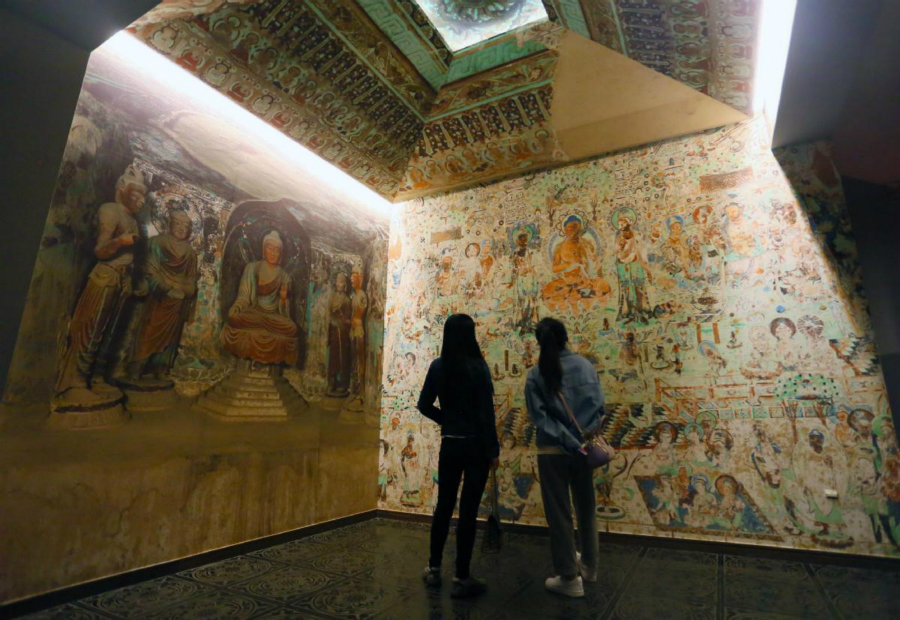Cultural connections gain fresh life

Tourists in Lanzhou, Gansu province, take in a copy of a mural from the Dunhuang Mogao Grottoes in May 2020. [Gao Zhan/China News Service]
"Each civilization is distinct and none is superior to others. We need to promote mutual learning between our civilizations and enhance good-neighborliness and friendship between our countries," he said via video in November last year.
Museums of countries involved in the China-proposed Belt and Road Initiative, or BRI, have increased the frequency of exhibitions on the cultural relics of other participating nations since the initiative was unveiled in 2013, museum insiders say. In doing so, they have strengthened people-to-people exchanges and mutual understanding.
The BRI focuses on promoting policy coordination, connectivity of infrastructure and facilities, unimpeded trade, financial integration, and closer people-to-people ties through extensive consultation, joint contributions, and shared gains, with the goal of bringing benefits to all.
Manuel Rabate, director of Louvre Abu Dhabi in the United Arab Emirates, says the museum has a number of important Chinese works in its collection, including the Winged Dragon, a sculpture from the Chinese Warring States Period (475-221 BC).
"Our dragon is actually a hybrid made up of various animals, with the hindquarters of a feline, the forequarters of an alligator, the antlers of a stag and the wings of a bird," he says. "It is also one of the largest free-standing sculptures of a dragon known to date in Chinese art. It is extremely popular with our audiences and we often see visitors taking selfies with it."
Rabate says that cultural exchange is a critical factor in the success of humanity and it is Louvre Abu Dhabi's main mission to tell stories of cultural connections.
























